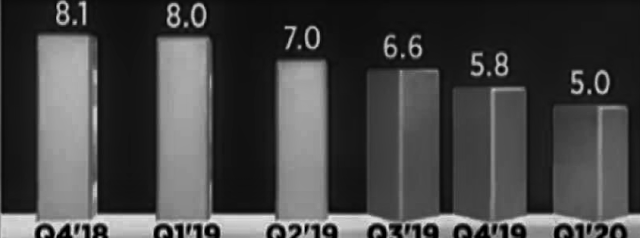What is the GDP used for?
One word that has been widely discussed for the past few days from newspapers to the common man is GDP. GDP is what Gross Domestic Product is last and how important it is to a country. This is rarely what you would have thought. Experts show that GDP is the most important measure to measure the health of an Indian economy. Let us tell you that in the first quarter of the current fiscal (India GDP Growth Rate) (April-June), the country's economic growth rate has dropped to 5 per cent, which is a six-and-a-half-year low. The economic growth rate in the last quarter of the last financial year was 5.8%.
 |
| What is the GDP used for? India |
(1) GDP is the total cost of producing goods and services during a particular period. In India, GDP is calculated quarterly every third month. The thing to note is that these products or services must be done within the country.
Explaining the impact of weak GDP figures, Experts say that monthly of Rs 10,534 per capita for 2018-19, the annual GDP per capita will mean that per capita income finance. In the year 2020, 526 will increase.
If one understands the simple language, some might say that if GDP grows at 4 per cent, then the income increase will be Rs 421. This means that a 1 per cent reduction in growth rate will reduce the average monthly income per person by Rs 105.
In other words, if the annual GDP rate falls from 5 to 4 per cent, then the income per month will be Rs 105 less. That is, one person will get Rs 1260 less a year.
There will be more inequality in the economy. It may have more impact on the poor than the rich. He said the number of people living below the poverty line could increase. The decline in GDP will also reduce the employment rate.
Based on this, the GDP of India is the three major components of agriculture, industry and services in the country: the GDP rate is fixed on average based on increasing or decreasing production. This figure indicates the economic growth of the country. In simple terms, it is clear that if the GDP figure is increased then the economic growth rate has increased and if it is lower than the previous quarter, then there is a trend in declining market conditions of the country.
Who releases GDP statistics in India - Government agency CSO releases these figures.
The Central Statistics Office (CSO) collects production and services data from across the country. This process involves many indices, mainly industrial production index ie IIP and Consumer Price Index (CPI).
If only three items of 100 rupees were made in the country in 2011, the total GDP would have been 300 rupees. And by 2017, the output of this commodity remained two but the price was Rs 150 and nominal GDP was Rs 300.
>> This is where the base year formula works. According to the cost of 2011 (100 rupees), the actual GDP was 200 rupees. Now it can be clearly seen that GDP has declined.
>> The CSO coordinates and collects data from various central and state agencies. For example, for the calculation of WPI and Consumer Price Index (CPI), WPI and Consumer Price Index (CPI), the Ministry of Consumer Affairs collects data on manufacturing.
>> Similarly, the department of IIP figures under the Ministry of Commerce and Industry gathers. The CSO collects all these figures and then calculates and releases GDP figures.

ConversionConversion EmoticonEmoticon